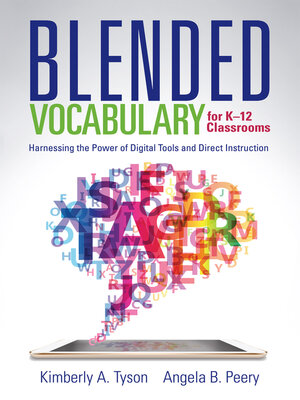Blended Vocabulary for K—12 Classrooms
ebook ∣ Harnessing the Power of Digital Tools and Direct Instruction
By Kimberly A. Tyson

Sign up to save your library
With an OverDrive account, you can save your favorite libraries for at-a-glance information about availability. Find out more about OverDrive accounts.
Find this title in Libby, the library reading app by OverDrive.



Search for a digital library with this title
Title found at these libraries:
| Library Name | Distance |
|---|---|
| Loading... |
Benefits
In Blended Vocabulary for K–12 Classrooms: Harnessing the Power of Digital Tools and Direct Instruction, authors Kimberly A. Tyson and Angela B. Peery note the gap in vocabulary knowledge and instruction that pervades K–12 classrooms and illustrate why it is vital for elementary and secondary students to gain effective vocabulary instruction to achieve at high levels.
Created for teachers, administrators, instructional coaches, and literacy teams, this resource outlines a research-based model that will help you ensure English learners, general education students, and special education students master tiered vocabulary. With greater understanding of how to teach vocabulary effectively and incorporate digital tools, you can develop a blended approach to word learning that makes a significant impact on achievement.
Contents
Chapter 1: A Culture of Word Learning
Chapter 2: A New Model for Effective Vocabulary Instruction
Chapter 3: Methods for Classifying and Selecting Vocabulary Words
Chapter 4: Effective Instruction and Assessment
Chapter 5: Vocabulary Strategies for Elementary Students
Chapter 6: Vocabulary Strategies for Secondary Students
Chapter 7: Vocabulary Strategies for Special Populations
Appendix A: Digital Tools That Support Vocabulary and Word Learning
Appendix B: Suggested Books Containing Tier Two Vocabulary Words for Primary and Intermediate Grades
Appendix C: Annotated Bibliography of Vocabulary Books to Integrate Into Word Learning







